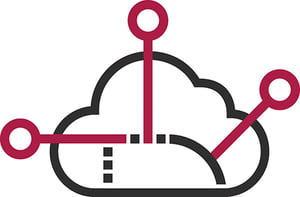With the turn of each calendar year, digital marketers must evaluate what’s new – how emerging and optimized technology can help make us better decisions for acquiring and retaining donors.
The pace of emergence has quickened and swept up many nonprofits in a fit of “digital transformation.”
Tech is coming at us faster. Our attention is shrinking. Therefore, it’s important that you know where to focus, so you don’t get lost in a sea of buzz with no action.Here’s our take on what trends nonprofit marketers need to consider and incorporate into their work this year:
1. Data Privacy
We are in an era of compliance. 2018 was somewhat theoretical on data regulations, with a new understanding of being a data processor vs. data controller (nods to GDPR and CCPA, for example). In 2019, marketers will need to look at ways to balance protection and personalization in a “Privacy First” approach to data management. Data strategy, data management and metadata management (see below) will be a significant thread of conversation in nonprofit circles.
2. UX x CX
 Speaking of emerging opportunities, here comes UX x CX. User experience and customer experience are merging, now more than ever, to form new, strategic communication maps.
Speaking of emerging opportunities, here comes UX x CX. User experience and customer experience are merging, now more than ever, to form new, strategic communication maps.
Consider a mapping project of your own, investing in analysis of how folks first become your donor (CX, or customer experience) and then how to deepen that relationship (through optimized UX, or user experience).
Forrester, among our fav CX experts, notes that the new model for customer experience is to operationalize emotion and track when customers are paying the most attention, are most anxious or appreciate value the most. To put it another way—it’s time to invest in data science to make sense of what people’s actions are telling you. This has massive implications on nonprofit strategies for web experiences and digital media, among others.
3. More Metadata
A key business intelligence trend is how analytics capabilities will tighten around metadata. Dataversity predicts that 2019 will bring major tech changes related to business intelligence solutions, such as cloud deployment, mobile, machine learning and deep-learning analytics.

Each of these require management of more detailed data points, or metadata. Nonprofits who are looking to make a bigger impact in engagement should consider their options to scrape, store and leverage metadata.
Metadata can be defined as data that describes other data. Metadata includes the type of device you are using, the location of the user, time of day, related data such as email address, length of engagement, search history, and on and on and on.
Proper (aka smart) use of metadata in digital marketing means more intense personalized digital experiences, moving us even closer to a personalized web. A super basic example is applying metadata to donation buttons in email marketing.
Through metadata, you can create personalized and dynamic buttons that call out the person, time (related to the offer), and suggested amount. You can also change these things—making them dynamic throughout the day. It’s… so meta.
4. Rise of Attribution
Business Intelligence and Machine Learning budgets are predicted to increase in the next twelve months. You know why? Because we are thunderstruck by data right now—how to see more of it, store more of it and leverage more of it. Plus, we’re all under pressure to deliver on revenue expectations—which means working more smart.
Multi-touch marketing attribution is the smart solution. Going back nearly two years, the Marketing Attribution Think Tank showed 75% of respondents planned to use multi-touch attribution within 18 months. Here. We. Are. Multi-touch attribution is the science of quantifying the relative impact marketing touches have on conversions.
In lay terms, attribution will show you what channels impacted your conversions. The benefit of attribution is seeing, in aggregate, a customer journey—which can inform your strategy and placement in a whole new way.
5. Local Influencer
Influencer marketing used to mean celebrity endorsement/collaboration—nonprofits clamoring to align with their version of A-listers to help show value for their mission.
As we move into 2019, the rise of influencers has moved ever closer to home.
According to Statista, influencer marketing outperforms other brand marketing initiatives, accounting for nearly 40% of attributable value.
The move to local over global is all about relationships—and in 2019, progressive nonprofits will explore relationships with genuine influencers that can credibly tell mission-based testimonials. You’ll see this come to life through more live video on Facebook, Twitter, LinkedIn and other digital platforms.
6. Storytelling
Content marketing has officially exploded as the tactic du jour, and maybe the most important creative trend in digital for 2019 is the focus on storytelling. Our sector has always been focused on storytelling—it is the basis for a nonprofit appeal.
Storytelling is transforming. Just like Local Influencers, the evolution of storytelling involves the digital channels we’re using to bring stories to life. 37% of marketers say that visual storytelling is the most important form of content.
Storytelling should be authentic and relevant—so that you can create empathy with your audience, leading to engagement and moving through your donor journey. You can expect the next twelve months to officially crown Storytelling as a buzzword, while the principles of this trend challenge your digital marketing channels, including display, native, email marketing and more.
7. Smart Speaker Enabled Engagement

Alexa is the MVP of my house. Not just because of her jokes, riddles, song quiz and help with the weather. Alexa is a new and emerging way that donors can engage with the nonprofits they support. Yes, Alexa can accept donations for you. Alexa can also provide you with unique engagement opportunities to support education and event marketing. Analyst firm Canalys has projected 75 million smart speakers in use by the end of 2018. This is an emerging opportunity to consider for many nonprofits.
8. Coral
 In 2018 we predicted the rise of the Pantone color of the year—Ultra Violet. And no, nonprofits didn’t rush to adjust all assets to purple. But frankly, we can’t deny the role of color in our digital marketing efforts. Color has an impact on how we engage with content.
In 2018 we predicted the rise of the Pantone color of the year—Ultra Violet. And no, nonprofits didn’t rush to adjust all assets to purple. But frankly, we can’t deny the role of color in our digital marketing efforts. Color has an impact on how we engage with content.
Purple is a combination of the power and strength of red and the truth of blue—creating a feel of wealth and value. Expression of value has been a need and focus for many nonprofits in 2018.
As we move into the next year, we’re again looking at the Pantone team to give us inspiration on what we might see. The 2019 color of the year is PANTONE 16-1546 Living Coral. This mellow hue is vibrant and lively, bringing authenticity to our palette.Authenticity balanced with automation. That’s how we see 2019.





Leave a comment: